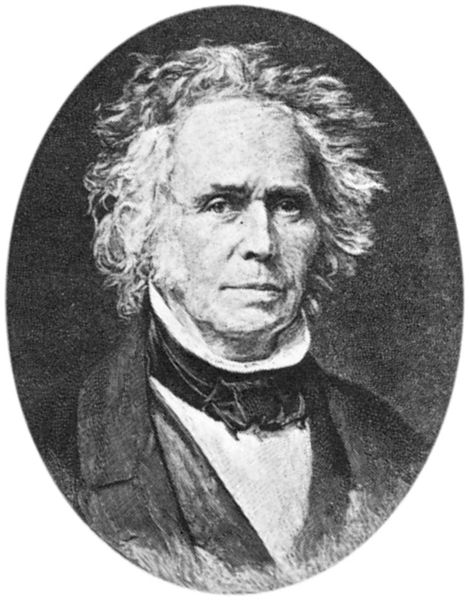<Back to Index>
- Astronomer William Cranch Bond, 1789
- Novelist Lev Nikolayevich Tolstoy, 1828
- 1st Chief Minister of the French King Armand Jean du Plessis, Cardinal-Duc de Richelieu, 1585

William Cranch Bond (September 9, 1789 – January 29, 1859) was an American astronomer, and the first director of Harvard College Observatory.
William Cranch Bond was born in Falmouth, Maine (now Portland, Maine) on September 9, 1789. When he was young, his father, William Bond, established himself as a clockmaker after a failed business venture; trained by his father and aided by his penchant for engineering, W.C. Bond built his first clock when he was fifteen years old. He eventually took over his father’s business, becoming an expert clockmaker himself. In 1806, when he was seventeen years old, Bond saw a solar eclipse. Soon thereafter, he became an avid amateur astronomer. When he built his first house, Bond made its parlor an observatory, complete with an opening in the ceiling out of which his telescope could view the sky.
In 1815, Bond traveled to Europe, commissioned by Harvard University to gather information on European observatories. On 18 July 1819 at Kingsbridge in Devon, Bond married his first cousin, Selina Cranch, who bore him four sons and two daughters. After Selina's death in 1831, Bond married her older sister, Mary Roope Cranch.
In 1839, Bond was allowed to move his personal astronomical equipment to Harvard and serve as its (unpaid) "Astronomical Observer to the University." Later, in 1843, a sun-grazing comet aroused enough public interest in astronomy that Harvard was able to raise $25,730 towards the construction of a state-of-the-art observatory. Bond designed the building and the observing chair (both of which are still in working order today), and Harvard bought a fifteen-inch German-built refracting telescope, equal in size to the largest in the world at the time. The telescope was first put to use on June 24, 1847, when it was pointed to the moon.
- Independently discovered the Great Comet of 1811
- Bond and his son George Phillips Bond discovered Saturn's moon Hyperion; it was independently co-discovered at the same time by William Lassell in Britain, and both are given credit.
- Father and son were the first to observe the then innermost ring of Saturn, termed the Crepe ring when they pointed Harvard’s telescope towards Saturn in 1850.
- Working with John Adams Whipple, the Bonds pioneered astrophotography, taking the first daguerreotype image of a star (Vega, in 1850) ever taken from America. In all, the threesome took between 200 and 300 photos of celestial objects.